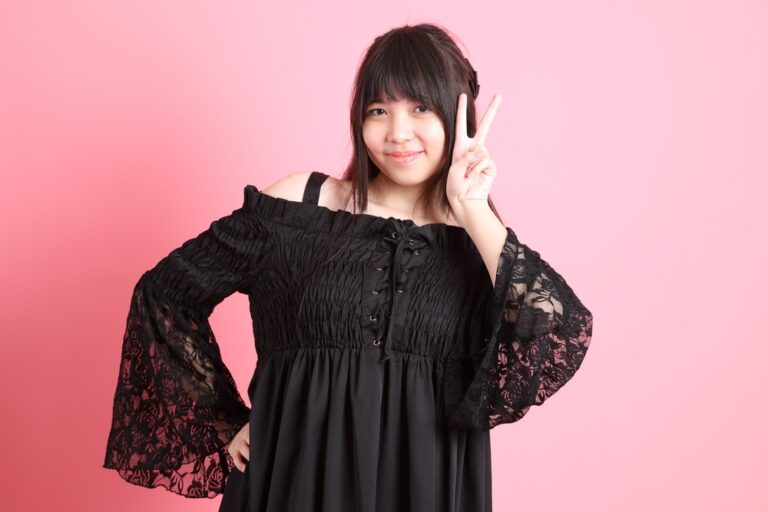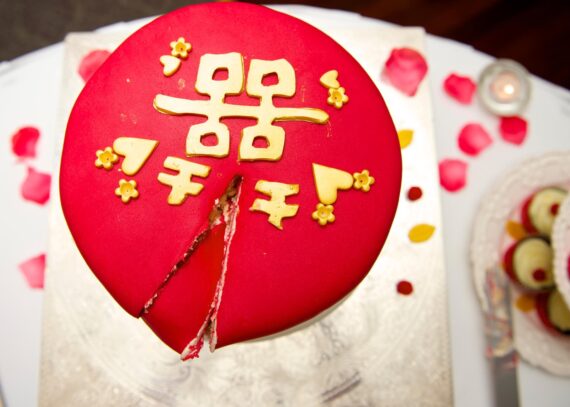Guide to Chinese Hand Gestures

Gestures are an important part of communication in any culture. In China, certain gestures have different meanings than in Western cultures, and understanding these differences can help avoid miscommunication or accidentally offending someone.
Mastering the subtle art of Chinese hand gestures can enhance your cultural appreciation and enable more authentic interactions. Whether you’re traveling to China for leisure or engaging in business ventures, being adept in the local gestural etiquette will open doors to enriched interpersonal relationships and a deeper understanding of the vibrant Chinese culture.
By paying attention to these unspoken cues, you’re not just respecting the tradition but also embracing a whole new dimension of non-verbal communication that could be both enlightening and rewarding.
Chinese hand gestures for greetings
The initial exchange of gestures sets the tone for the interactions that follow. Here’s a glimpse into the Chinese way of extending greetings through hand gestures.
Handshakes
In China, handshakes are a common way to greet people formally and casually. They are seen as polite and friendly gestures. When shaking hands, it’s good to be gentle and accompany it with a smile.
Waving
Waving is another common gesture used for saying hello or goodbye, mainly among friends or people of the same age. It’s a relaxed and friendly way to greet someone you know.

Hugging
Hugging is not common in China, especially as a greeting. It’s usually reserved for very close friends or special occasions. If you’re unsure, it’s safer to stick with a handshake as it’s accepted in most situations and seen as respectful.
By understanding and using these gestures appropriately, you’ll be better equipped to navigate social interactions in China. Whether it’s a formal handshake or a friendly wave, these gestures can help build good relationships and show respect to others.
Related Reading: Chinese Greetings: Why Your Teachers Are Wrong
Chinese hand gestures for numbers
Numbers form the foundation of many interactions, whether at a bustling marketplace, in a casual conversation, or during formal discussions. In China, representing numbers through hand gestures blends simplicity with cultural tradition.
Numbers 1-5
In China, representing numbers 1 to 5 with hand gestures is straightforward and mirrors the way it’s done in Western cultures. Simply hold up the corresponding number of fingers to signify the number you’re referring to. For instance, three fingers held up represent the number three.
Numbers 6-10
Things get interesting when we move to numbers 6 through 10, as the gestures diverge from the Western style and take inspiration from the shapes of Chinese characters.
- Number 6: Make a “telephone” gesture with your thumb and pinky finger extended and with the rest of your fingers curled.

- Number 7: Form a “chop” gesture by extending your index and middle fingers together, similar to a peace sign but with the fingers together.
- Number 8: Mimic the character for eight by forming a gun shape with your hand, extending your thumb and index finger.

- Number 9: Create a hook by curling your index finger.

- Number 10: Cross your index fingers or form a closed fist to signify ten, resembling the Chinese character for ten (十).


These hand gestures for numbers 6 to 10 are quite distinctive and may take some practice to get used to. They’re practical for communicating numbers quickly and silently and offer a fascinating glimpse into the visually intuitive aspect of Chinese characters.
By familiarizing yourself with these gestures, you can engage in a form of communication that transcends language barriers, embodying a blend of practicality and cultural richness.
Whether you’re haggling at a local market or indicating a quantity during a Chinese job interview, mastering these gestures can serve as a handy communication tool amid the language diversity in China.
Related Reading: Numbers in Chinese: How to Count and More
Chinese hand gestures for communication
Non-verbal cues can convey a spectrum of meanings, helping to express yourself or understand others. When it comes to communication, specific hand gestures are used to signify common phrases or responses, portraying respect, acknowledgment, or a call to action. Here’s a closer look at some of these gestures.
Pointing at yourself
In China, when referring to yourself, the gesture is to touch the tip of the nose instead of pointing to the chest, as might be common elsewhere. This subtle gesture is a culturally accepted way of indicating “me” or “I.” However, it’s important to note that pointing at others, especially at their noses, is considered impolite.

“Come here” gesture
When beckoning someone to come closer, the palm faces down, and the fingers are waved inwards. This gesture is usually reserved for people perceived as socially lower in status. For peers or elders, a more respectful approach would be to bow slightly as an invitation to come closer or to engage in conversation.
“Thank you” gesture
Expressing gratitude in China has its own elegant gesture. Place one palm over the other fist and bow slightly to signify “thank you.” This gesture embodies a respectful and appreciative acknowledgment, mirroring the graciousness embedded in Chinese social interactions.

Related Reading: Thank You in Chinese — 谢谢 xièxiè
Employing the correct gesture in the right context not only conveys the intended message but also demonstrates a level of cultural understanding and respect.
Chinese gestures for good luck
Chinese hand gestures can carry a weight of significance, especially when intertwined with auspicious wishes and good fortune. The following traditional Chinese hand gestures are an act of goodwill, prosperity, and benevolent wishes.
“Good fortune” gesture
Interlock your hands in front of you to wish someone good fortune. This gesture becomes particularly meaningful during the Chinese New Year when it’s accompanied by the phrase “给您拜年了” (gěi nín bài nián le), which translates to wishing someone a Happy New Year. This gesture, coupled with the phrase, is a hearty way of sending over waves of good fortune and joy.
Fist and palm gesture
Placing a fist in an open palm and holding it in front of you is another gesture associated with good fortune. This gesture is often seen during New Year celebrations as a way of promising or wishing good fortune to others. It’s a traditional gesture that encapsulates the spirit of goodwill and hopeful prosperity.
These gestures convey well-wishes and resonate with the cultural aesthetics of expressing goodwill and fortune in a visually graceful manner. By embracing these gestures, you can partake in the tradition of extending good luck and benevolent wishes in a manner that transcends linguistic boundaries, fostering a sense of shared hope and communal goodwill.
Chinese hand gestures for affection
The art of expressing affection and camaraderie finds a charming manifestation in Chinese hand gestures. These gestures are simple yet poignant, conveying a spectrum of emotions ranging from love to trust. Here’s a closer look at how affection is gestured through the hands in Chinese culture.
Heart shape gesture
Creating a small heart shape using the thumb and index finger is a tender gesture of affection in China. This is a widely recognized symbol of love and fondness, and it has also become extremely popular in the West. When you form this mini heart, you convey warmth and affection, making it a sweet, non-verbal way to express your feelings.

Pinky promise gesture
The act of hooking pinky fingers together is very recognizable to Western readers, and it’s a quaint yet profound gesture signifying a promise or pact among close friends or couples in China. This gesture (although not legally binding!) holds a sentimental value, symbolizing trust and the cherishing of one’s word in personal relationships.
These Chinese hand gestures are a heartwarming step into the expression of affection and trust. They reflect the gentle and symbolic ways in which affection and promises are conveyed beyond words, adding a touch of charm to interpersonal interactions. Through these gestures, you can feel the warmth and essence of personal bonds resonating through the simple yet meaningful motions of hands.
Related Reading: Can You Learn Chinese In 5 Minutes?
Chinese hand gestures in photos
Photographs are a slice of time, capturing moments, and in China, hand gestures add a layer of expression to these still memories. Chinese hand gestures in photos are a fun way to add personality to the pictures and a means of conveying a specific mood or message. Here’s a look at some popular hand gestures you’ll often come across in Chinese photography.
Peace sign gesture
The peace sign, made by raising the index and middle fingers while keeping the other fingers folded, is a widely popular gesture in photos across China. It’s often held near the face, adding a playful or cheerful vibe to the picture.
This gesture has transcended its original meaning of peace and now acts as a trendy pose, especially among the youth, to add a touch of style and friendliness to photographs. Thanks to the popularity of this hand gesture in Japanese anime, it has also become very common to see on Western social media pics.

OK gesture
The OK gesture, forming a circle with the thumb and index finger while keeping the other fingers extended, is also embraced in Chinese photography, similar to its use in Western cultures. This gesture in photos symbolizes approval or that everything is fine. It’s a simple yet effective way to convey a positive sentiment, making the photos appear lively and affirmative.
Whether snapping a casual selfie or posing for a group photo, these Chinese hand gestures add a whimsical yet expressive touch to the captured moments. They reflect a blend of cultural and contemporary expressions, making each photograph a narrative intertwined with gestures that speak volumes.
Chinese rude hand gestures to avoid
Navigating through the social nuances of China requires an awareness of certain hand gestures that could be perceived as impolite or disrespectful. Awareness of these can help avoid unintentional offense, ensuring smoother interactions. Here’s a look at some Chinese hand gestures that are best avoided.
Avoid pointing at people
In China, pointing at people with a single finger is considered very rude. It’s seen as singling out someone in a disrespectful manner. A more polite alternative is to use your whole hand if you need to indicate a person or a direction, which softens the gesture and is seen as more respectful.
Avoid flamboyant gestures
Big, flamboyant hand gestures can come across as impolite or too aggressive in Chinese culture. It’s advisable to keep hand movements more subdued and controlled to maintain a respectful demeanor, especially in formal or unfamiliar settings.
Avoid gestures using feet
In Chinese culture, feet are considered unclean, so using them to gesture is highly offensive. Also, sitting in a way that your feet are pointing at someone is considered very disrespectful. It’s essential to be mindful of how you position your legs, especially in social gatherings, to avoid sending the wrong message.
Being cautious with these Chinese hand gestures and postures is a step towards showing respect and understanding of the cultural norms prevalent in China. This awareness can go a long way in ensuring amicable interactions and building rapport with individuals in social or professional settings.
Related Reading: How to Say Sorry in Chinese: Best Ways to Apologize Correctly
The middle finger in China
In Chinese medicine, the middle finger is linked to the heart meridian. The heart meridian consists of the heart, diaphragm, and small intestine. It’s believed that the middle finger is a direct channel or branch to the heart meridian. Because of this, acupuncture is often used on or near the middle finger to heal swelling in the face and chest, hot flashes, chest pain, and insomnia.
Similarly, people often meditate with the middle finger up to promote peace, harmony, and balance. For some Chinese, the middle finger is a connection to the universe.
Showing your middle finger or flipping someone off in the West and in China evokes the same emotion: anger. More often than not, people give someone the middle finger to disrespect or insult them — it’s a hostile gesture. They’re likely angry or frustrated.
In Chinese culture, the middle finger isn’t used as often as in Western culture. For instance, in the United States, many use the middle finger as a mild, silly insult at friends to say they’re annoyed. In China, people are more likely to shake their heads than flip someone off when they’re annoyed or frustrated.
In other words, the middle finger can’t easily be brushed off in China like in the West. It’s considered an extremely disrespectful and rude insult that shouldn’t be taken lightly.
Related Reading: 30 Chinese Cuss Words for Any Situation
The unspoken language of gestures
Exploring Chinese hand gestures reveals a rich world of non-verbal communication. From the simplicity of expressing numbers through hand shapes to navigating social interactions with caution to avoid rude hand gestures, there’s a wide range of silent conversations happening through the flicks and folds of fingers.
The kaleidoscope of gestures goes beyond mere functional communication. It’s a reflection of cultural norms, social etiquettes, and, at times, personal affections. A simple hand gesture can symbolize camaraderie, express the warmth of gratitude, or, if misused, can also sour relations.
As you prepare to delve deeper into the Chinese cultural milieu, why stop at gestures? There’s a rich linguistic landscape waiting to be explored, and what better way to immerse yourself than by mastering the language itself?
Elevate your Mandarin skills to new heights!
Embark on a linguistic adventure with our FREE Webclass. Discover how to accelerate your Chinese language learning journey and speak fluent Chinese up to 3x faster than a full-time student, all without feeling overwhelmed or spending a fortune. Our 90-minute Webclass is packed with insights and methods that make learning Mandarin easy, fast, and enjoyable.
Learn the secrets of The Blueprint, become a memory athlete to fast-track your literacy, and ignite your passion for learning Chinese regardless of your busy schedule. And all while having fun!
Your journey towards mastering Chinese is just a click away. Register your free spot now, and save your seat for this transformative Webclass. The countdown has begun.








